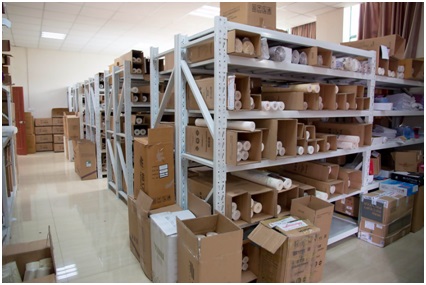The requirements for products and services help regulate, maintain and control the quality of a products or service, ensuring it's consistancy and meeting customer requirements.
The Products and Services clause within ISO 9001:2015 also includes communicating with customers, assessing and reviewing their requirements to gain valuable feedback for product development.
The common thread between different types of companies all around the world is the need to satisfy the customers that give them business. In order to do this, they must adhere to a set of guidelines and requirements for their products and services to control the quality of everything that goes out to the consumer.
In the current 2015 version of the ISO 9001 standards, all business organizations are required to verify that their products and services meet the necessary requirements before they are able to distribute them to the customer.
This clause within the ISO 9001, titled Products and Services, includes a few specific requirements that are related to communicating with customers, assessing the guidelines for products and services, identifying and tracing product, post-delivery activities, and even changes to the product itself.
Requirements for Products and Services:
Within the next few sections, we will be going over some of the main points in this list in further detail. Keep reading to find out everything you need to know about the specific requirements within the ISO 9001 Products and Services Clause
Among all of the diverse businesses that exist around the world, customer communication is something that is equally important to all of them, regardless of size or industry.
The center of every company is their customer base, due to the fact that they provide the cash flow and bring continuous income to the business. Without customers, the business would not be able to sustain itself for very long.
Therefore, communicating with the customers is just as important as keeping them. In fact, customer communication will actually help a business keep their customers, by gaining valuable feedback and advice from the people who are actually receiving the products and services.
At each stage, the key questions are:
With the help of customer satisfaction surveys and things of the like, the personnel of a business will be able to understand the things they are doing right, as well as what they could improve on.
As stated in the ISO 9001 standards, a business’ communication with customers must be highlighted and established. While it is not specified whether or not the entity should develop some kind of method for communication with the customer, there are a few things that must be proved during the auditing stage.
The list below will give you an idea of what companies need to prove as far as customer communication in order to be compliant with ISO 9001 regulations. Throughout the rest of this section, we will be discussing these processes in further detail.
Customer Communication Auditing Stage:
First and foremost, the method of customer communication must be clearly defined. Without a specific method, the entire process of establishing customer communication will not be efficient.
Although the actual method itself is not required by the ISO 9001 regulations to be recorded or documented directly, it must be established in order to be able to prove the points in the list above in the first place.
Additionally, the company must also be able to approve that this information is being both managed and properly maintained. Apart from simply defining a plan of action for communication with customers, it must actually be carried out in order to be effective.
In summary, the customer communications requirement within the Products and Services clause should consist of a plan for the business to be able to communicate directly with customers, in whichever way that may be.

Some of the other most important individual requirements within the Products and Services clause are the ones that outline how products should be created and distributed, as well as how they are identified and traced after the fact.
Control of Production and Service Provision:
The control of production and service provision requirement provides guidelines to businesses in order to provide their product or service under the most controlled of circumstances. These strict guidelines help them to avoid as many mistakes as possible from the time the product is brainstormed to when it is executed.
Since there are so many things that can potentially go wrong when it comes to designing, developing, and distributing a product, the ISO 9001 standards work to minimize mistakes in this aspect of a business.
Along with the list of controlled conditions that are provided by ISO 9001 regulations to maintain the quality of each product, there are customized conditions for each individual product or service, since no business or industry is exactly the same.
Additionally, the companies in question must always document all of the information that is being established, modified, or changed during all of these processes in order to maintain accuracy.
The equipment that is being used in the control of production and services must be kept track of, as well as the resources and materials that are being used to outsource products. The company is also responsible for maintaining a stable workplace environment that will be able to easily follow all specified ISO 9001 standards.
In order to be able to control production of products and services, the business must also have control over the employees that represent them. As a result, all employees must be completely compliant with ISO 9001 guidelines, to avoid any mistakes or violations of the mandatory ISO 9001 requirements.
The final steps in the control of production and service provision requirement are the delivery and post-delivery actions. In the event that anything needs to be done after the product or service has already been delivered to and received by the customer such as warranty claims, maintenance, or disposal of a product, it will be under this section.
Identifying and Tracing Products:
After the initial stage of planning and developing the product or service, businesses in some industries will need to be able to identify and trace their product long after they have been distributed to the consumers.
For instance, products like food must be able to be identified and traced for safety reasons after they have been spread out into supermarkets. On the other hand, cars and planes need to have parts that are identifiable and traceable in the case that something needs to be repaired, or that something was stolen from the vehicle.
This new requirement replaces ISO 9001:2008 Clause 7.2.1 - Determination of Requirements Related to Product Requirements. You should seek and record evidence that your organization has implemented a process to determine the requirements for the products and services that it intends to offer to customers.
This may also include the requirements from interested parties and also statutory and regulatory requirements relating to the product.
Identify the following:
This requirement is comparable to ISO 9001:2008 Clause 7.2.1 - Determination of Requirements Related to Product and Clause 7.2.2 - Review of Requirements Related to Product.
The requirement states that your organization should now include a review of the requirements arising from any relevant interested parties. You should seek and record evidence that these requirements are considered during product and service reviews.
Conduct a review of customer requirements before order acceptance:
All contracts and orders should be reviewed and accepted only if the requirements are clear and understood and the company has the capability and capacity to assure fulfillment of customer expectations.
This is a new requirement. You should seek and record evidence that your organization has ensured that all relevant documented information; relating to changed product or service requirements, is amended and those relevant design personnel are made aware of the changed requirements.
As you can see, there are plenty of specific requirements and regulations that go into producing quality products and services within a business. With the help of ISO 9001 standards, the process of efficiently catering to the customer base is easier than ever, and can be achieved with little to no mistakes along the way.
Updated: 26th February 2022
Author: Richard Keen

Richard is our Compliance Director, responsible for content & product development.
But most importantly he is ISO's biggest fanboy and a true evangelist of the standards.
Learn more about Richard